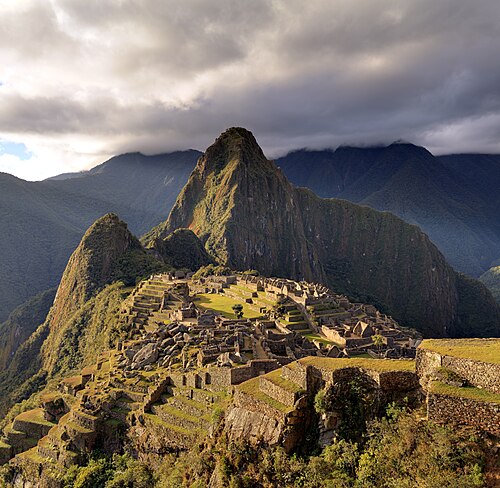Portal:Latin America
Appearance
Portal maintenance status: (April 2019)
|
 Latin America is the cultural region of the Americas where Romance languages are predominantly spoken, primarily Spanish and Portuguese. Latin America is defined according to cultural identity, not geography, and as such it includes countries in both North and South America. Most countries south of the United States tend to be included: Mexico and the countries of Central America, South America and the Caribbean. Commonly, it refers to Hispanic America plus Brazil. Related terms are the narrower Hispanic America, which exclusively refers to Spanish-speaking nations, and the broader Ibero-America, which includes all Iberic countries in the Americas and occasionally European countries like Spain, Portugal and Andorra. Despite being in the same geographical region, English- and Dutch-speaking countries and territories are excluded (Suriname, Guyana, the Falkland Islands, Jamaica, Trinidad and Tobago, Belize, etc.), and French-speaking countries and territories are usually excluded. The term Latin America was first introduced in 1856 at a Paris conference titled, literally, Initiative of the Americas: Idea for a Federal Congress of the Republics (Iniciativa de la América. Idea de un Congreso Federal de las Repúblicas). Chilean politician Francisco Bilbao coined the term to unify countries with shared cultural and linguistic heritage. It gained further prominence during the 1860s under the rule of Napoleon III, whose government sought to justify France's intervention in the Second Mexican Empire. (Full article...) See also: Latino and Ibero-America
| ||||||||||||||||||||||||||||||||||||||
Latin America articles | |||||||||
|---|---|---|---|---|---|---|---|---|---|
| History |
| ||||||||
| Geography | |||||||||
| Politics |
| ||||||||
| Economy | |||||||||
| Society |
| ||||||||
The emperor tamarin (Saguinus imperator) is a species of tamarin monkey allegedly named for its beard's resemblance to the German emperor Wilhelm II. It lives in the north Brazilian states of Acre and Amazonas and the southwest Amazon Basin, in east Peru, north Bolivia.
The fur of the emperor tamarin is predominantly grey colored, with yellowish speckles on its chest. The hands and feet are black and the tail is brown. Outstanding is its long, white beard, which extends to both sides beyond the shoulders. The animal reaches a length of 23–26 centimetres (9–10 in), plus a 35–41.5 cm (13.8–16.3 in) long tail. It weighs approximately 500 grams (18 oz). (Full article...)

 |
| Credit: Luis Argerich |
Skyline of the City of Buenos Aires, capital and largest city in Argentina, and the most visited city in South America. This picture shows specifically the district of Puerto Madero.

North and Central America
Caribbean
South America